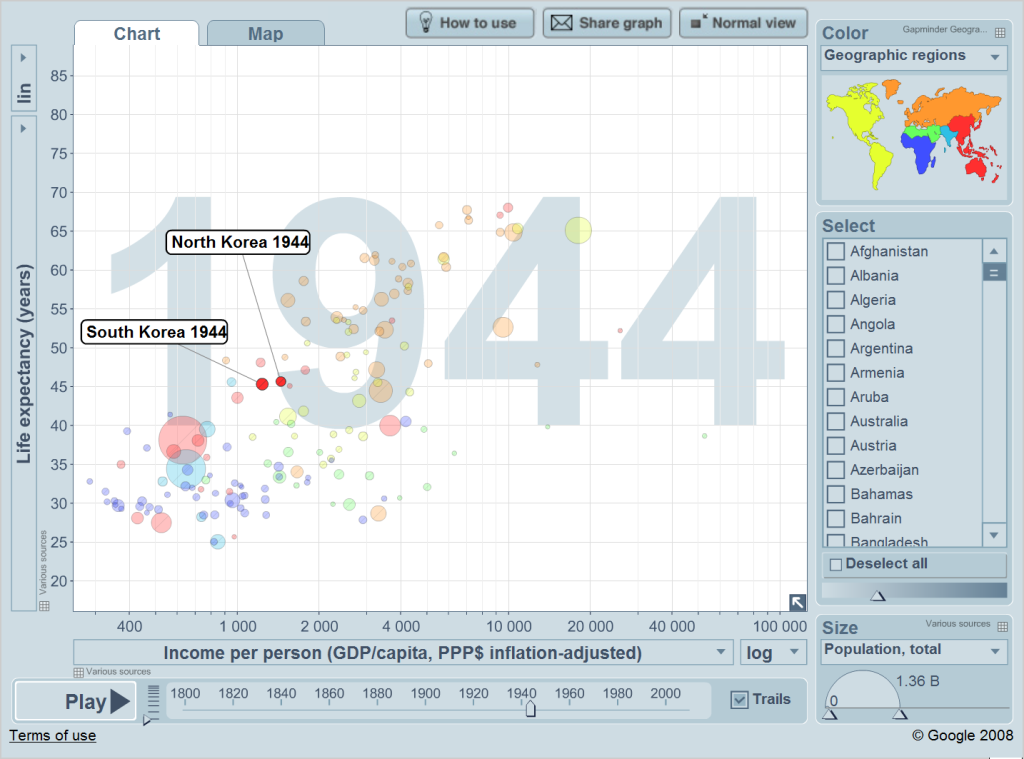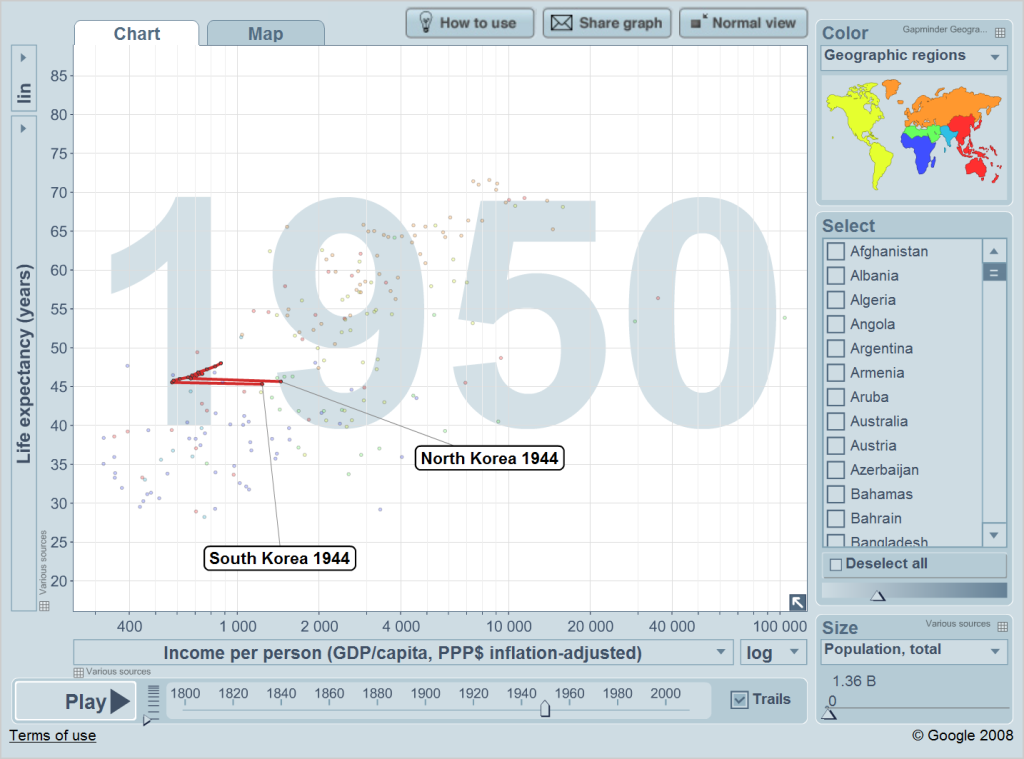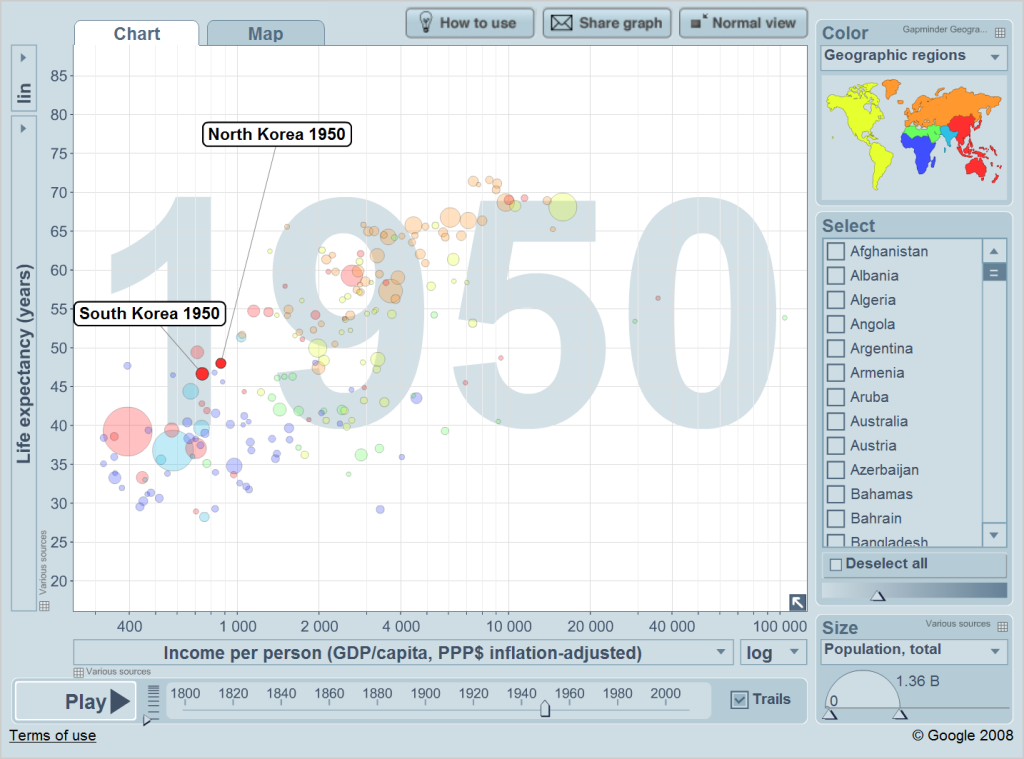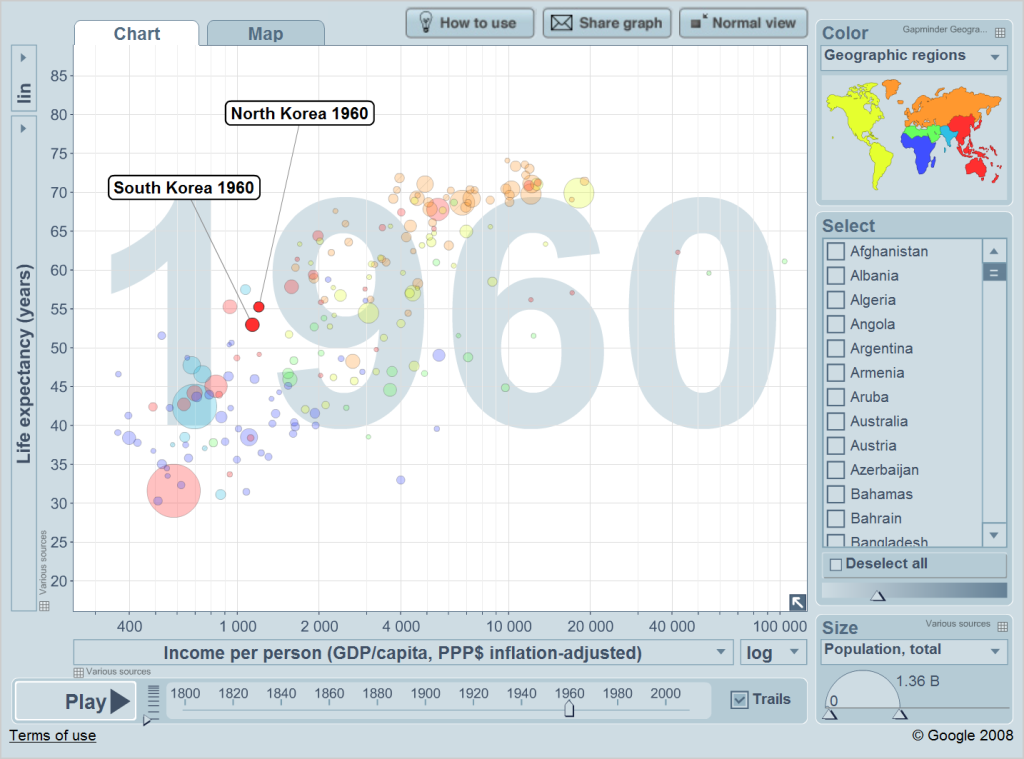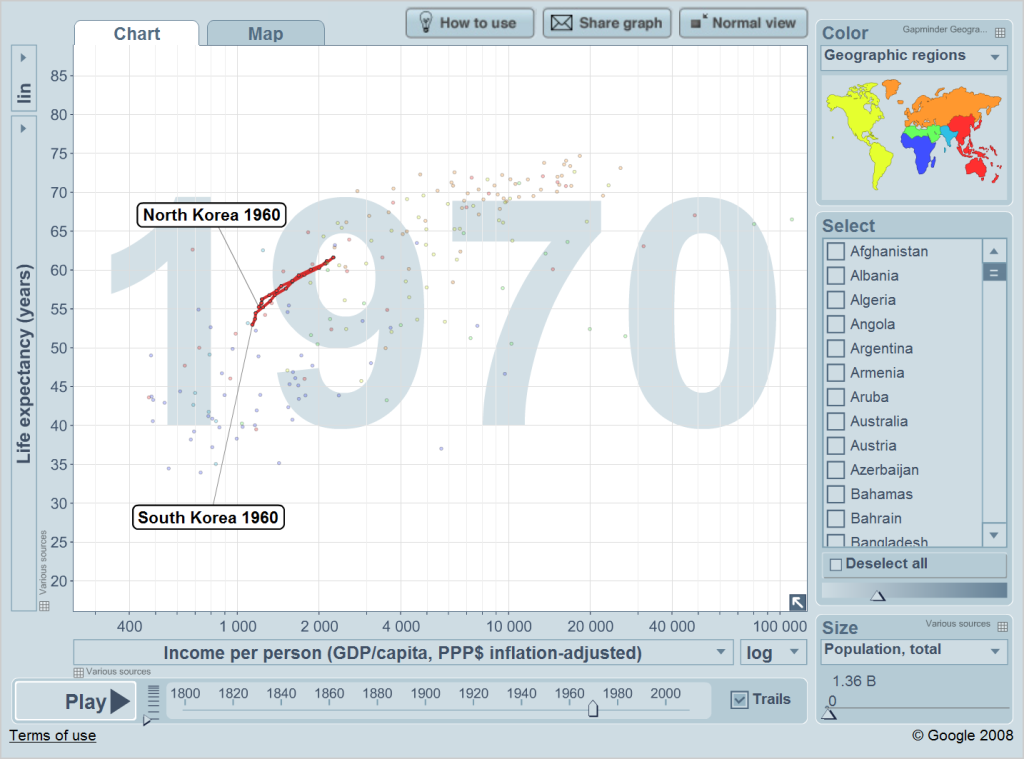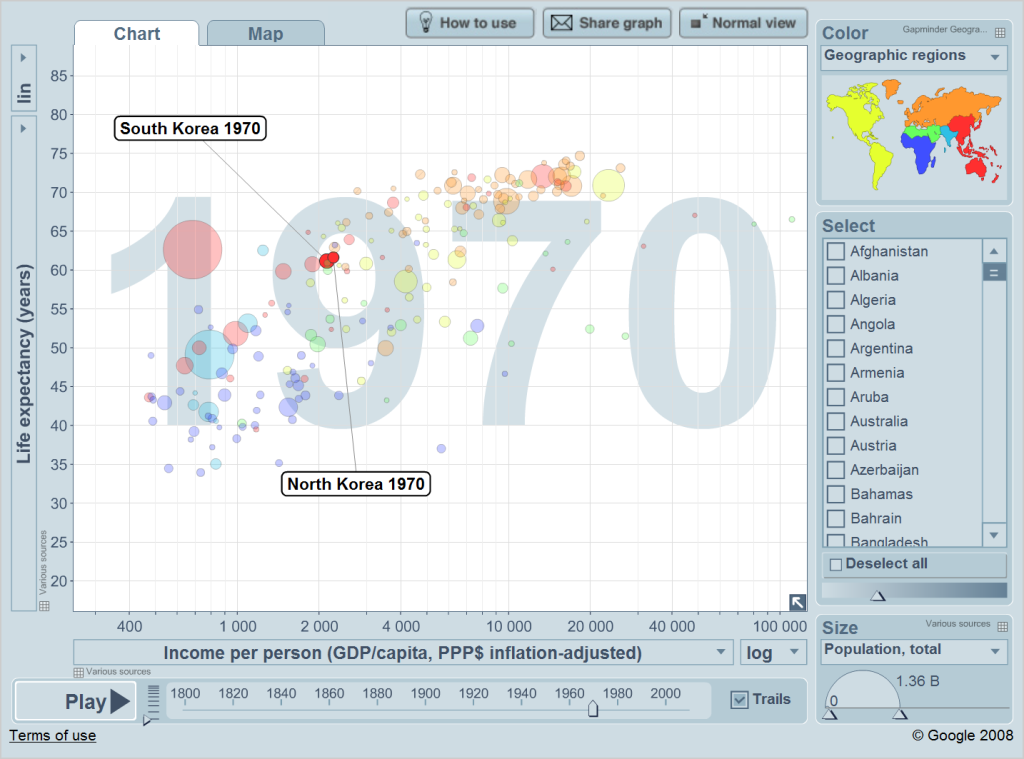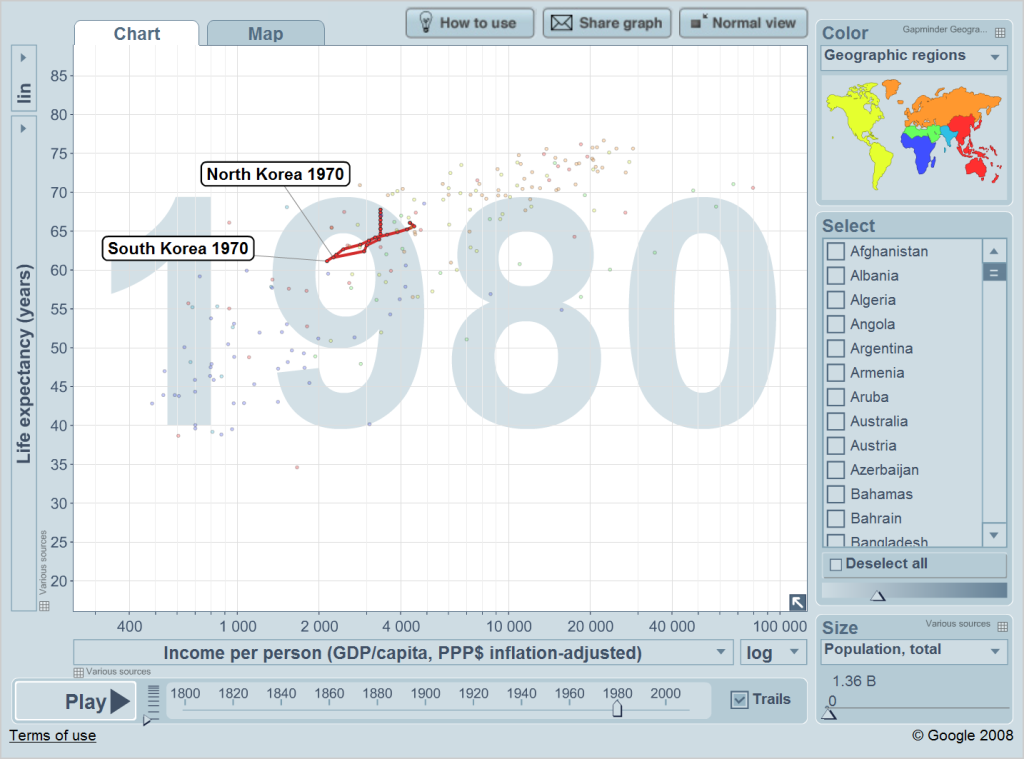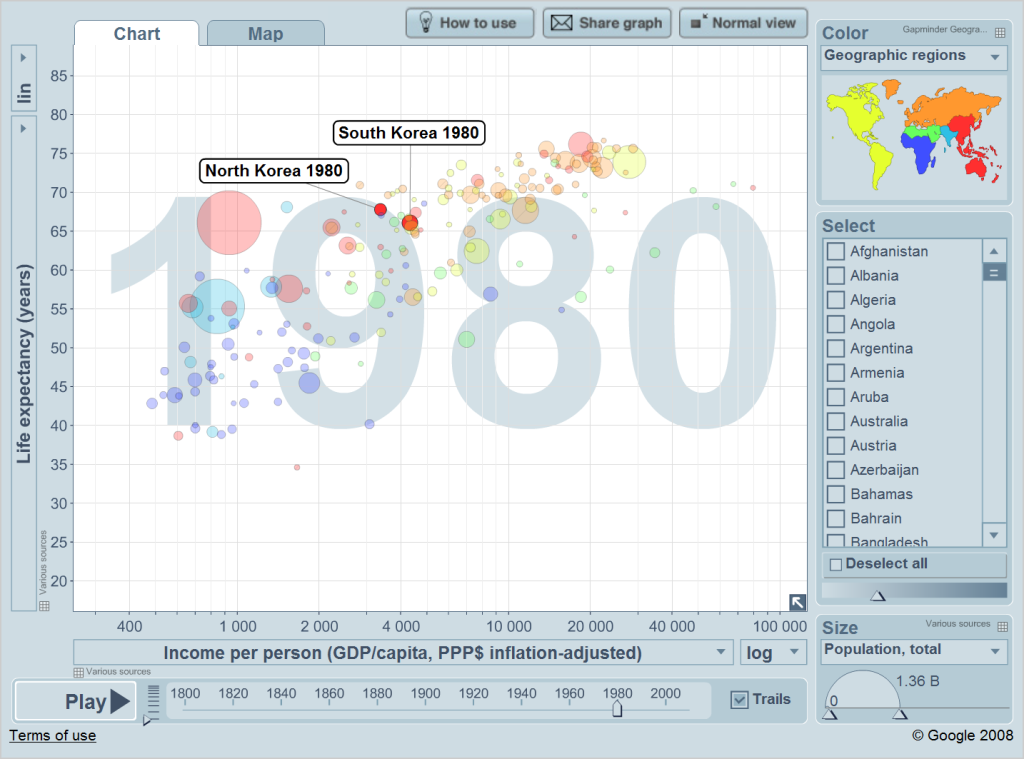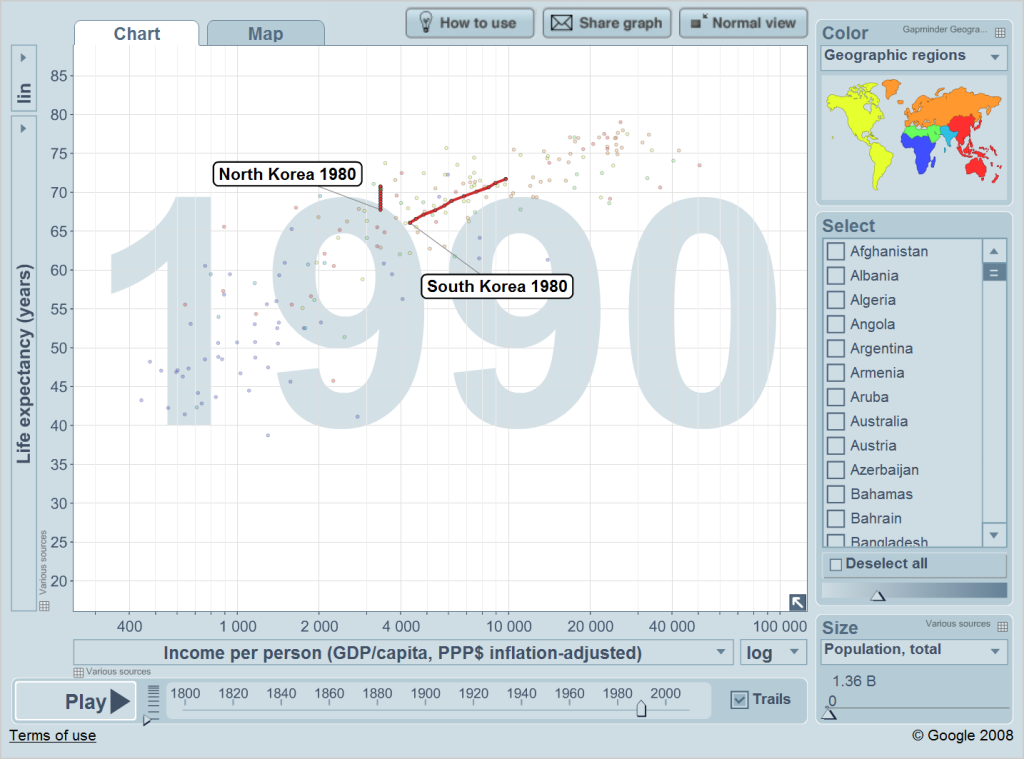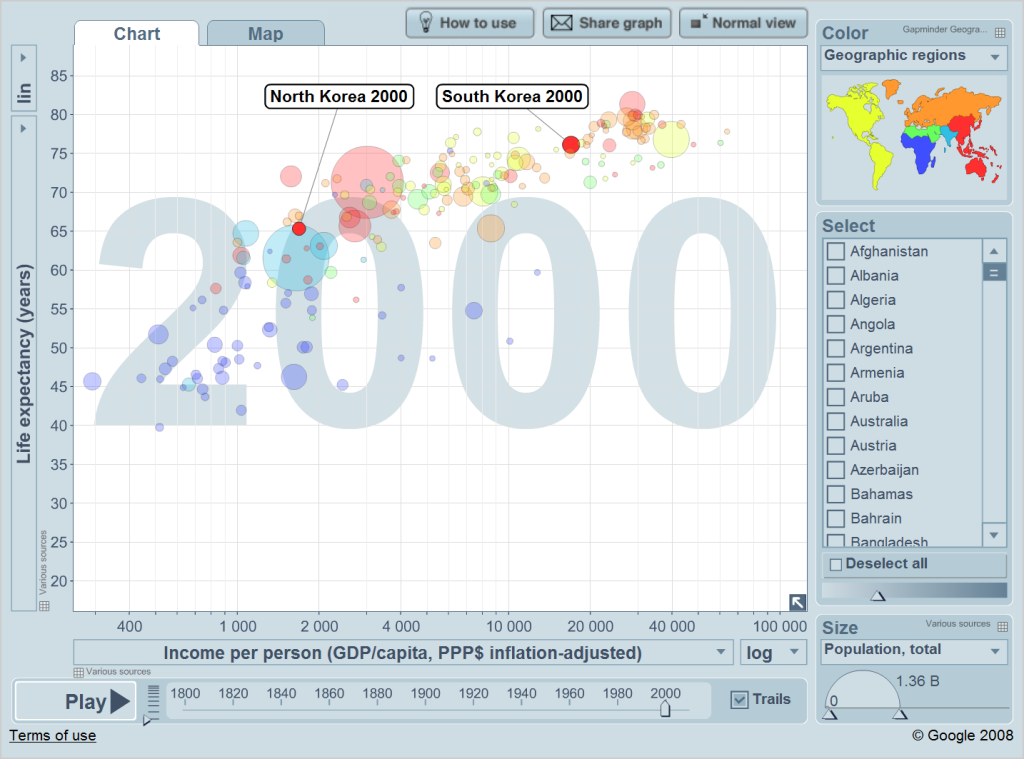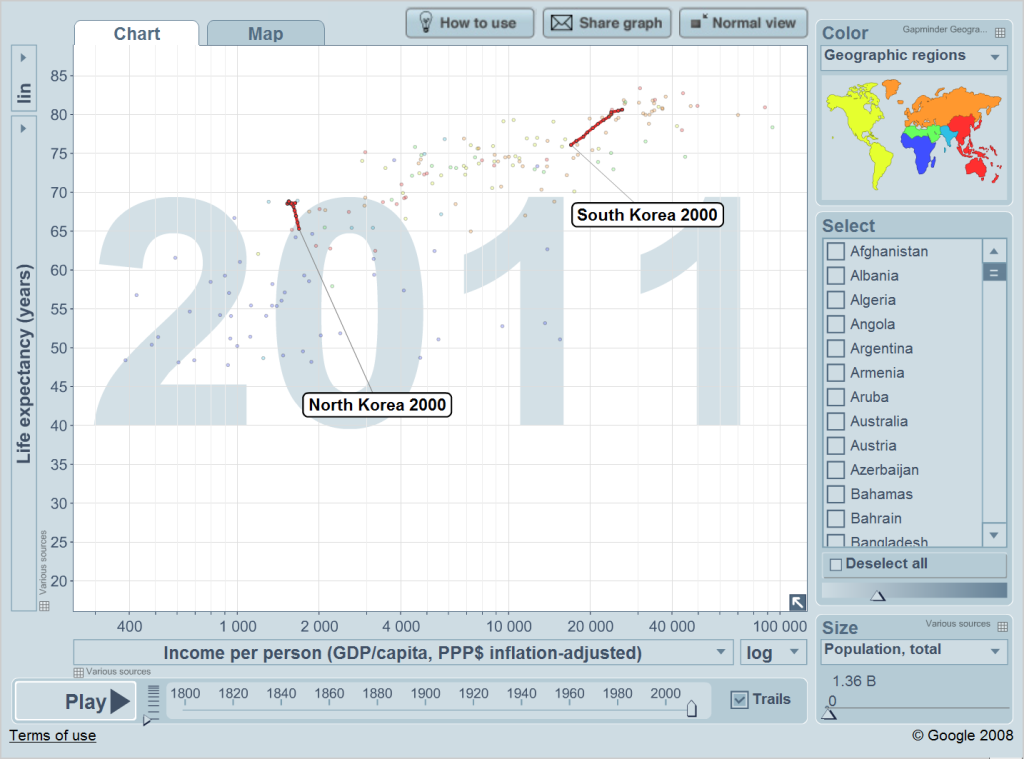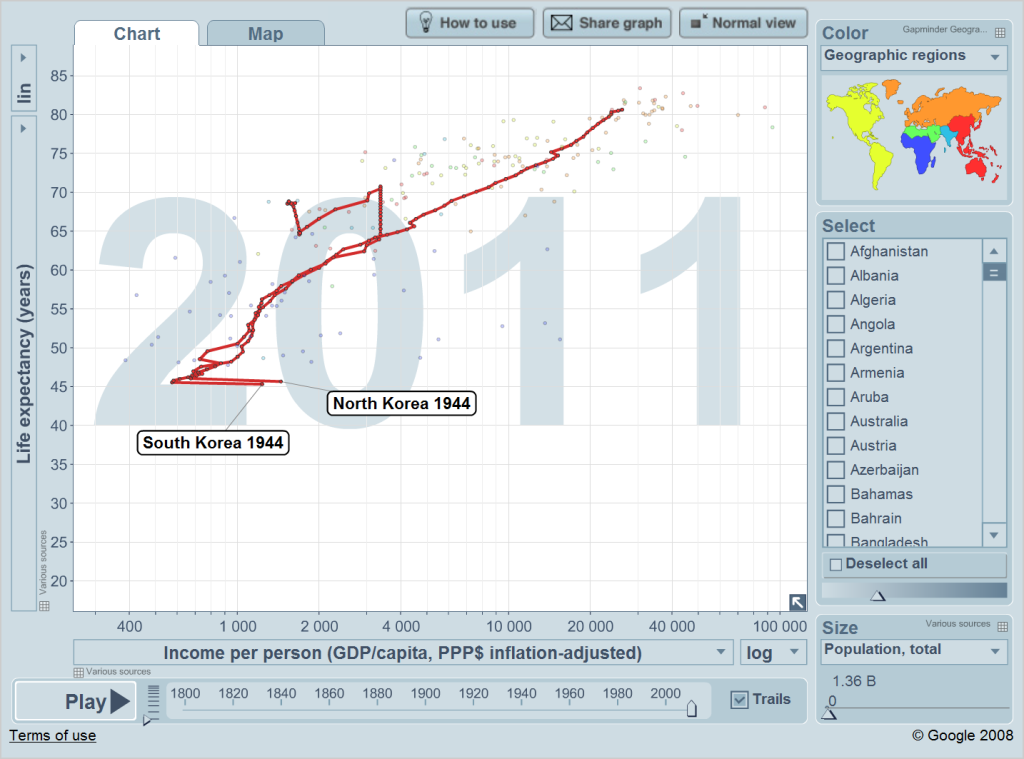This is the first part of two posts examining how North Korea fell behind South Korea. The second part can be found here.
The story of the two Koreas is a common American tale amongst the educated classes. As the fairy tale goes, once upon a time there was one Korea. By chance, one day this Korea was divided amongst the communists and the capitalists. The communist Korea fell into chaos and poverty. The capitalist Korea became rich and a democracy. Beware communism!
The general thrust of this tale is true. But there are some interesting complexities behind how North Korea and South Korea became the way that they are. After the Korean War, it wasn’t as if South Korea immediately began pulling ahead. For a long time it wasn’t obvious which Korea was doing better.
This is what happened:
More below.
To write this analysis, I utilized the website Gapminder. Run by a Swedish professor, Gapminder shows graphics of different levels of every imaginable type of statistic amongst the world’s varying countries.
This is the most basic graph: it shows wealth and health in 1944. The y-axis is life expectancy. The left axis is income per person (in dollars adjusted for inflation and purchasing power parity) put on a logarithmic scale (so that the difference between $1,000 and $2,000 is just as important as the difference between $10,000 and $20,000; this makes comparing things much easier). As one would expect, wealthier countries generally have higher life expectancies. The main exceptions, such as Germany, are busy fighting World War II.
This graph shows the state of the two Koreas in 1944. The South is relatively more populous and relatively poorer. One ought to note that at this time there were no good statistics; the figures here are estimates.
Korea was divided in two in 1945. I started a year earlier, and this chart makes clear why. The destruction of World War II did quite a lot of damage to both countries. By 1950 they still hadn’t recovered, unlike much of Western Europe and Japan. Both countries were generally poorer than your typical country.
Then the Korean War started.
The 1950s
Here is the state of both Koreas just before the Korean War. One should take caution in interpreting these figures too literally, especially for North Korea where data is lacking. The authors state: “We guestimate a level in 1950 so that the North is somewhat richer than South.” This sounds somewhat reasonable; there is evidence, for instance, that the North had more of an industrial base during that time.
Here’s what happens afterwards:
In these illustrations of change over time I decided to not show the population size. Doing so makes it quite difficult to tell what is happening. As it is even when the countries are sized as small as possible it’s still somewhat hard to differentiate which one is North Korea and which one is South Korea.
The Korean War,which started during 1950 and lasted until 1953, throws both countries backwards. Growth is then slow and halting until 1960. South Korea, for instance, suffers from high inflation and political unrest; its currency steadily loses value and has to be replaced by the early 1960s. Note that by this time, both Koreas are basically at their living standard before World War II.
The 1960s
By 1960 South Korea is still behind the North. During this time both sides of the Cold War were pouring aid into both countries in an attempt to show that their system was superior.
Let’s see what happens in the ’60s. Does South Korea surpass the North?
Nope. South Korea grows fast, but North Korea holds its own. Both countries grow fast compared to the chaos of the late forties/early fifties or the stagnation of the late fifties. During this time South Korea enjoyed the gifted leadership of dictator Park Chung-hee, whose daughter is president today. North Korea also grows fast; the fifties and sixties were still a time when people genuinely believed in communism.
The 1970s
By 1970 North Korea is still wealthier than South Korea. At least according to these estimates (since North Korea doesn’t seem to release economic data). The authors of Gapminder do note that heights of North Korean refugees were shorter than South Koreans of similar ages during this period, something which wasn’t true before 1944. It should also be noted that communist regimes are famous for releasing misleading economics statistics. Chinese economic statistics, for instance, indicate that China grew faster under Mao Zedong’s rule than during the last three decades.
The point is that it’s hard to know whether or not North Korea really was behind South Korea at this point.
By the end of the ’70s, however, the South has definitely surpassed the North. Economic growth continues under Park Chung-hee’s dictatorship. Meanwhile, North Korea decides to embark upon juche (self-reliance). Like the Soviet Union under communism, it begins to stagnate. It hits a brick wall in growth by the mid-70s. The country is hurt especially hard by rising oil prices.
The 1980s
At this point North Korea is just slightly behind South Korea. A communist might still argue that North Korea has just hit a rough patch and made a series of bad decisions. With time the two will be neck-and-neck again.
That doesn’t happen:
North Korea continues to stagnate throughout the 1980s, while South Korea powers ahead. Due to the paucity of North Korean data, Gapminder illustrates its living standards during this period as completely flat. In a grim omen, North Korean industrial production also starts falling by the end of the ’80s.
The 1990s
By this time South Korea is well ahead of North Korea. It’s ahead of Latin America and catching up to Eastern Europe. Meanwhile, North Korea’s stagnation has left it behind.
Then the Soviet Union falls:
With the fall of the Soviet Union, North Korea loses all the Soviet aid that kept it afloat. The economy enters a tailspin. There is a famine. Kim Il-Sung dies in 1994 and is replaced by his incompetent son Kim Jong-Il.
South Korea does a lot better. It grows fast for most of the decade, although the 1997 Asian Financial Crisis hits it hard. The country never regains its earlier growth rates (although much of this is also due to it becoming a developed country).
The two Koreas are going in opposite directions. The gap of the 1980s becomes a chasm.
The Last Decade
By 2000, the two countries’ paths have diverged considerably. Westerners are writing stories about how the fate of the two Koreas shows the failures of communism.
What happened in the past decade is a fairly familiar story:
South Korea continues growing quickly; today it is catching up to Southern Europe. Given Europe’s economic problems, by the end of the decade South Korea will certainly be richer than Italy and Spain. Meanwhile North Korea Kim Jong-Il continues to mismanage the economy; incomes decreased for the third straight decade. Efforts to reform have failed. The good news is that lifespans have recovered from the famine.
Conclusions
Here’s where North Korea and South Korea are today:
North Korea is the poorest country in Asia. It will certainly continue to be that way; its closet “competitor” Myanmar is implementing economic and political reforms that will lead to substantive growth. South Korea, on the other hand, is amongst the world’s wealthiest countries. It has weathered the recent economic crisis well.
So the fairytale is true. Nevertheless, the picture is a bit more complicated than it sounds. Let’s look at an overall summary of these countries since partition:
What we see is that the two countries are neck and neck up until the mid-1970s, and then they diverge. As the picture shows, the South didn’t immediately take off after the Korean War, and the North didn’t immediately go backwards after the communists took over. Instead, the South stagnated for a decade after the war. Meanwhile the North had substantial initial success. Up until 1980 a communist could still say, with substantial support, that communist North Korea was doing just as well as capitalist South Korea.
It was only during the middle of the 1970s when the two paths began to separate, when North Korea started finding out the limits of communism.
The next post will look at specific factors behind the decline in North Korea.
–inoljt
